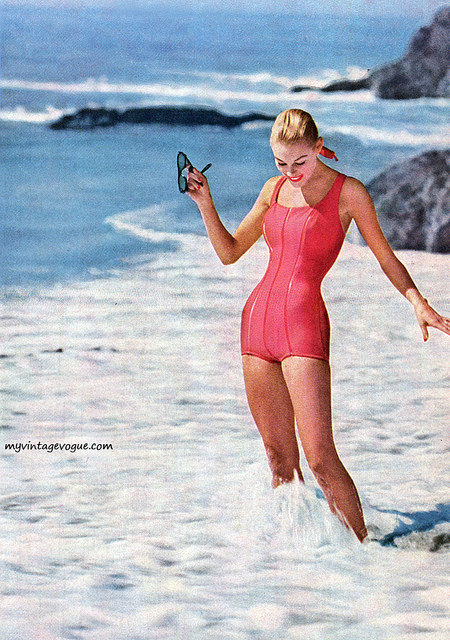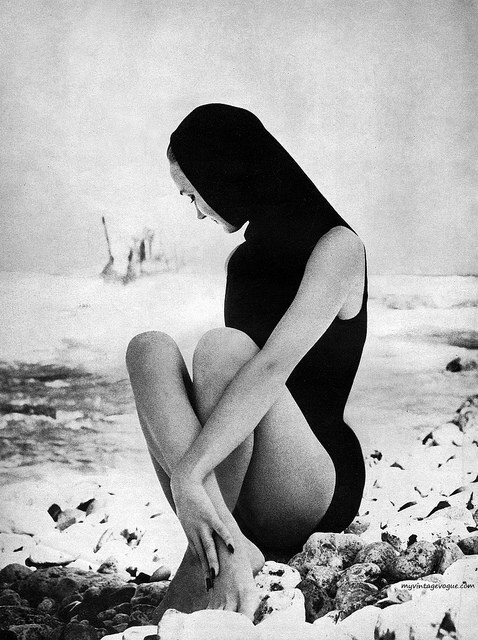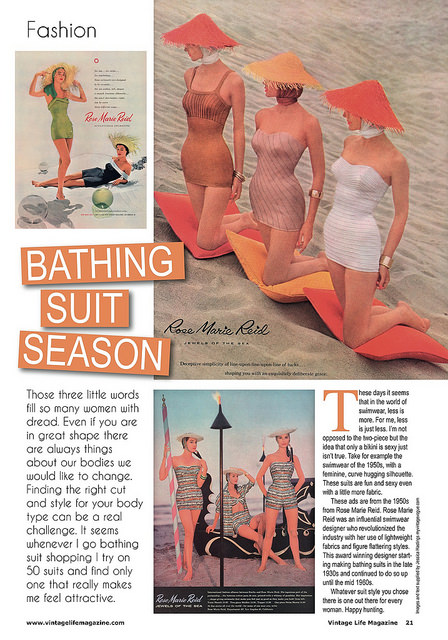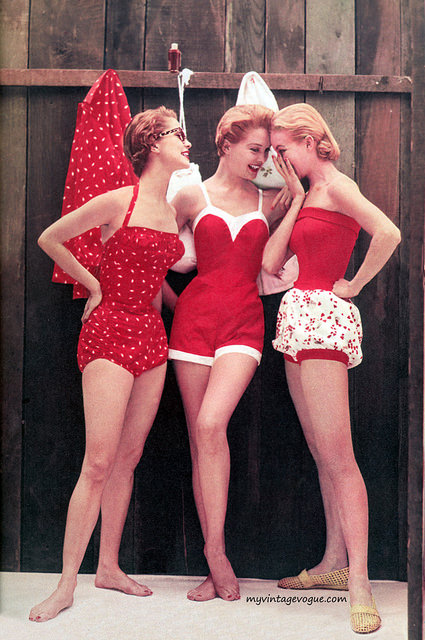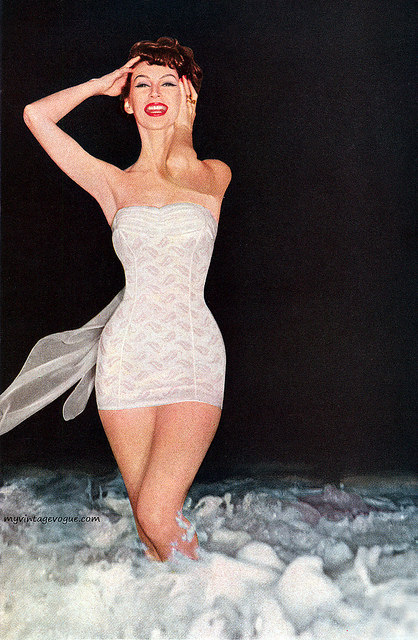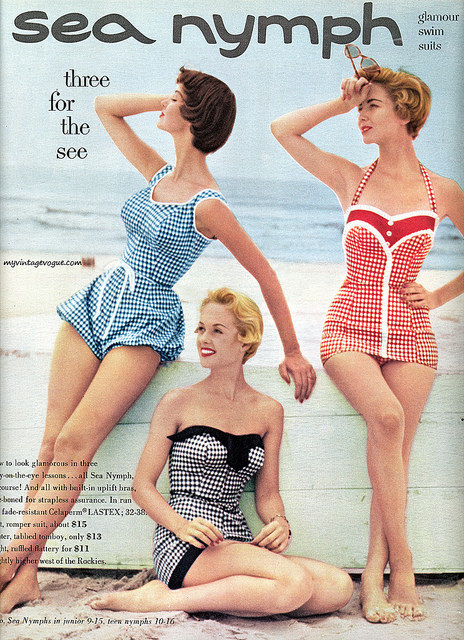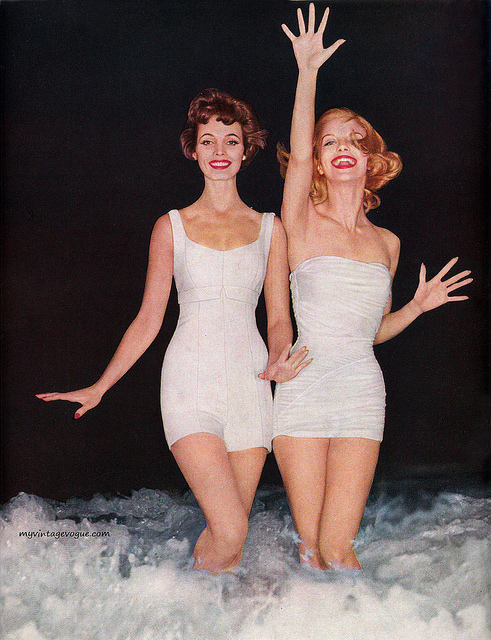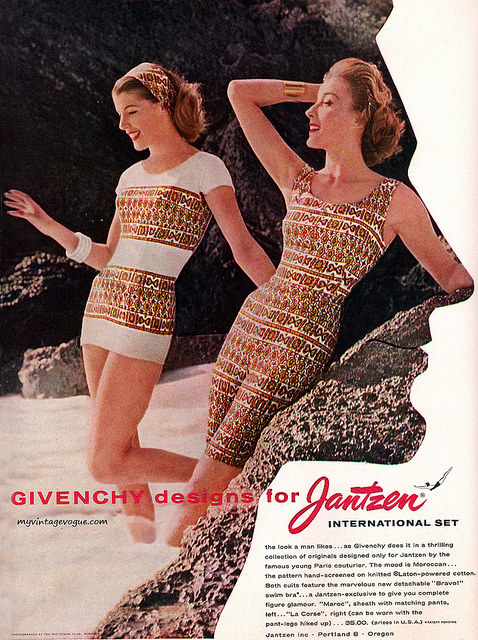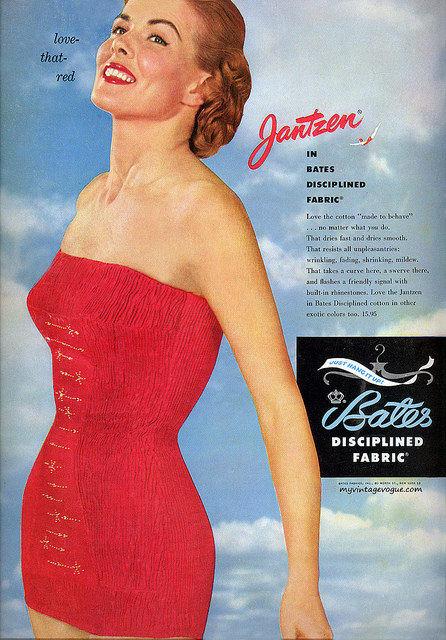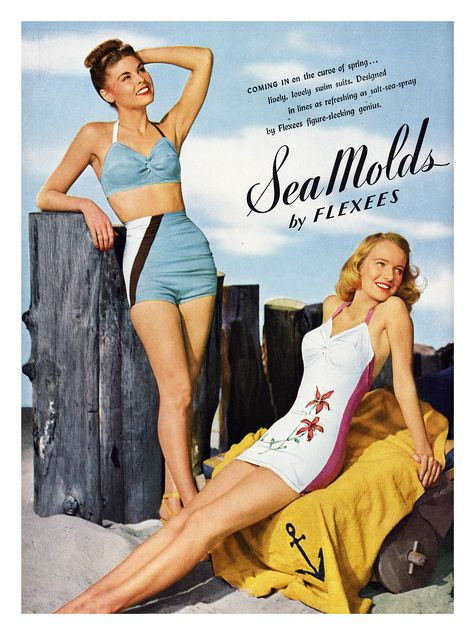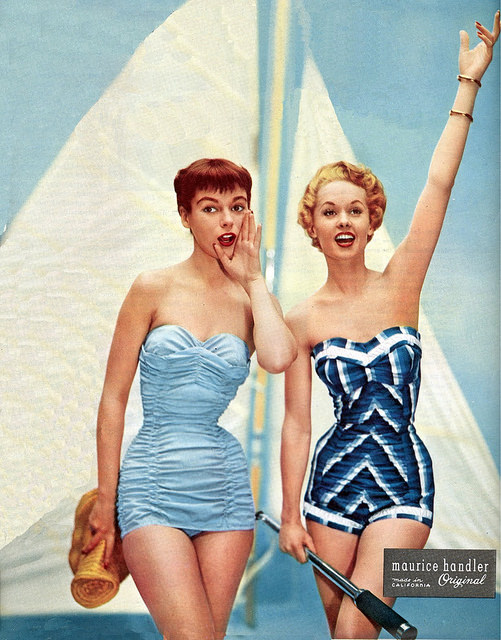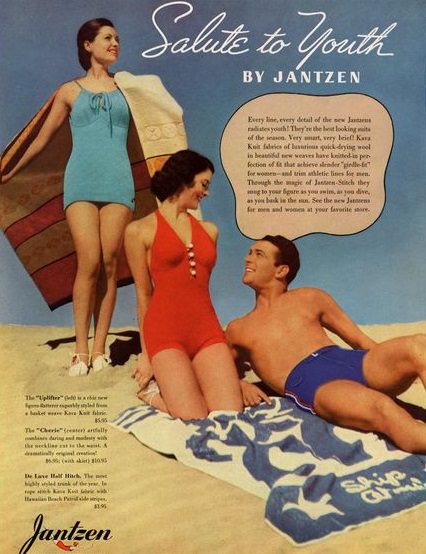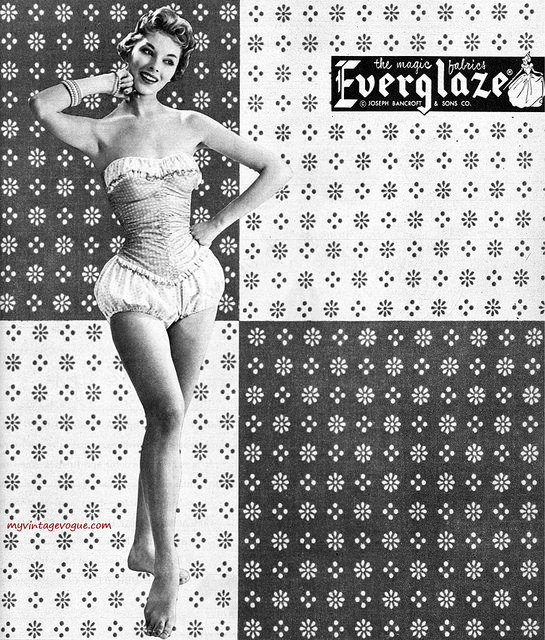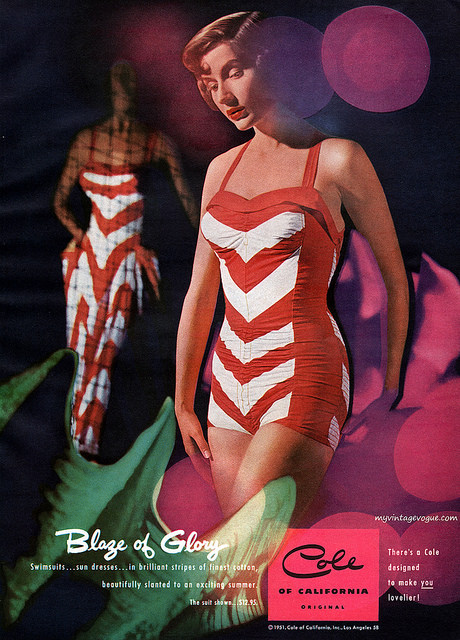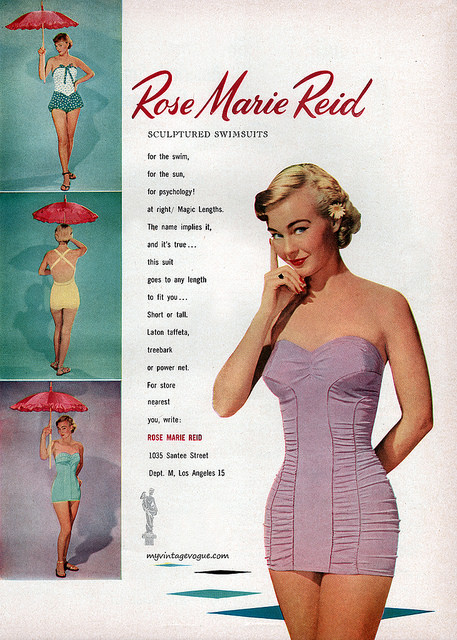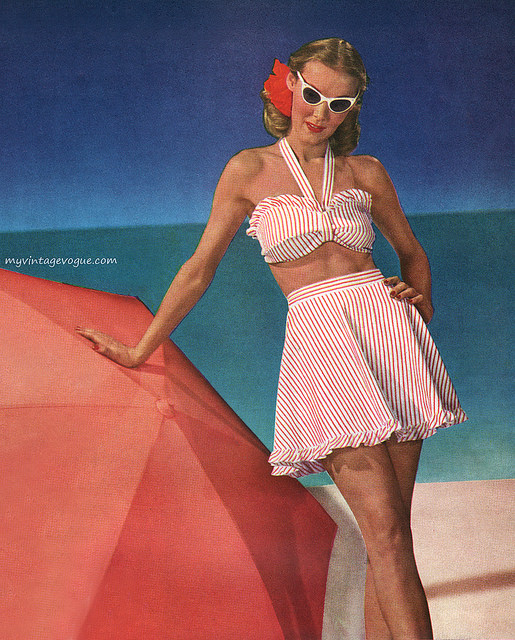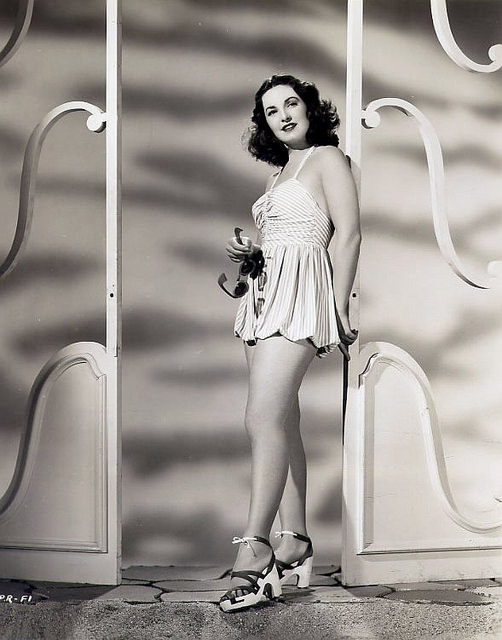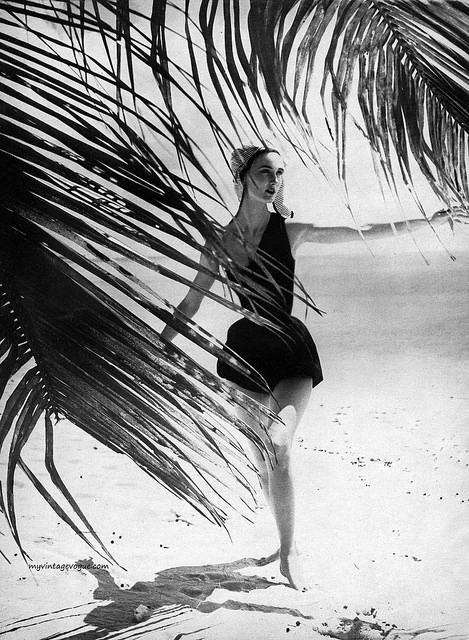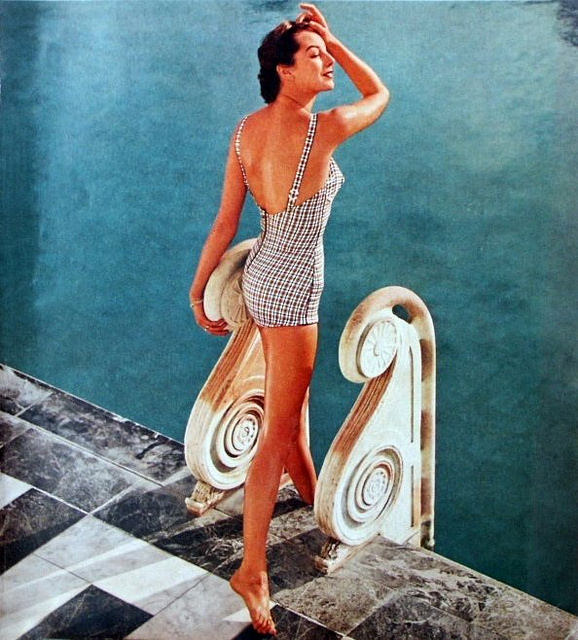Swimwear, like all fashions, changes with the times. The styles popular in the 1940s and 1950s were quite different from what we see on beaches today. These decades saw major shifts in design, materials, and the way women felt about showing their bodies at the beach or pool. Let’s dive into the world of swimwear during these two fascinating decades.
The 1940s
World War II had a big impact on fashion during the 1940s. Resources were limited. Fabric was rationed. This meant that clothing, including swimwear, had to be more practical and less extravagant. Functionality was key.
Swimsuits of the early 1940s were often made from materials like cotton or rayon. These fabrics were more readily available than silk or other luxury fabrics. They were durable but not always ideal for swimming. They could be heavy when wet.
One-piece swimsuits were the most common style during this period. They typically featured a skirted bottom that provided coverage for the hips and upper thighs. This style was considered modest by the standards of the time. It was a practical choice.
Read more
The top part of the swimsuit often had a halter neckline or wide shoulder straps. These styles provided support and kept the suit in place during swimming or other activities. They were designed for active wear. They were not very revealing.
Colors were generally subdued. Dark blues, greens, and browns were popular choices. Patterns were often simple, such as stripes or polka dots. These styles reflected the wartime focus on practicality. They were not overly flashy.
The Rise of the Two-Piece
While the one-piece suit dominated the early 1940s, a new style was beginning to emerge: the two-piece. This style was more revealing than the one-piece. It was considered quite daring at the time. It marked a shift in swimwear fashion.
Early two-piece suits typically consisted of a bra-like top and high-waisted shorts. The shorts often had a skirted panel for added coverage. The midriff was usually covered or only slightly exposed. It was a gradual change.
The two-piece suit was not immediately accepted by everyone. Some people considered it too revealing. However, it gradually gained popularity, particularly among younger women. It was a symbol of changing times.
Post-War Glamour
After World War II ended in 1945, fashion began to change again. There was a renewed interest in glamour and femininity. This was reflected in swimwear styles. A new era of fashion began.
The late 1940s saw the rise of the “New Look,” a fashion trend created by designer Christian Dior. The New Look emphasized a woman’s curves, with a cinched waist, a full bust, and rounded hips. It was a very feminine style. It celebrated the female form.
This new emphasis on curves also influenced swimwear design. Swimsuits became more form-fitting. They were designed to enhance a woman’s figure. They used new techniques to do so.
The use of boning, padding, and elasticized fabrics helped to create a more shapely silhouette. These features provided support and structure. They helped to create the desired hourglass figure. They were hidden features.
The skirted bottom remained popular, but it became more streamlined and less bulky. The emphasis was on creating a smooth, continuous line from the waist to the thighs. The overall look was more elegant. It was more refined.
The 1950s
The 1950s continued the trend towards more glamorous and revealing swimwear. Hollywood stars played a major role in popularizing new styles. They were often seen in stylish swimsuits in movies and magazines. They set the trends.
One-piece suits remained popular, but they became more sophisticated. They often featured design details such as ruching, draping, and embellishments. These details added visual interest and a touch of glamour. They made the suits more fashionable.
The use of brighter colors and bolder patterns also became more common. Floral prints, geometric designs, and abstract patterns were popular choices. These styles were more eye-catching than the subdued styles of the early 1940s. They reflected a more playful mood.
The two-piece suit continued to gain popularity in the 1950s. It evolved into more daring styles. The most significant development was the emergence of the bikini. It was a game changer.
The bikini was invented in 1946 by French engineer Louis Réard. It was named after the Bikini Atoll, where atomic bomb tests were being conducted. It was a very revealing two-piece swimsuit. It exposed the midriff and much of the legs.
The bikini was initially considered shocking and scandalous. It was banned in some places. However, it gradually gained acceptance, thanks in part to its adoption by Hollywood stars like Brigitte Bardot. It became a symbol of youth and liberation.
The development of new synthetic fabrics, such as nylon, revolutionized swimwear design in the 1950s. Nylon was strong, lightweight, and quick-drying. It was a major improvement over natural fibers.
Nylon also had excellent stretch and recovery properties. This made it ideal for creating form-fitting swimwear. It allowed for greater freedom of movement. It provided better support.
The use of nylon and other synthetic fabrics allowed designers to create new and innovative swimwear styles. They could create suits that were more comfortable, more durable, and more flattering. They had more options.


